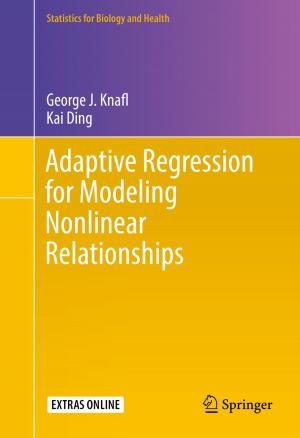Hypergraph Theory in Wireless Communication Networks
Nonfiction, Computers, Networking & Communications, Hardware, Science & Nature, Technology, Telecommunications| Author: | Hongliang Zhang, Lingyang Song, Zhu Han, Yingjun Zhang | ISBN: | 9783319604695 |
| Publisher: | Springer International Publishing | Publication: | July 24, 2017 |
| Imprint: | Springer | Language: | English |
| Author: | Hongliang Zhang, Lingyang Song, Zhu Han, Yingjun Zhang |
| ISBN: | 9783319604695 |
| Publisher: | Springer International Publishing |
| Publication: | July 24, 2017 |
| Imprint: | Springer |
| Language: | English |
This brief focuses on introducing a novel mathematical framework, referred as hypergraph theory, to model and solve the multiple interferer scenarios for future wireless communication networks. First, in Chap. 1, the authors introduce the basic preliminaries of hypergraph theory in general, and develop two hypergraph based polynomial algorithms, i.e., hypergraph coloring and hypergraph clustering. Then, in Chaps. 2 and 3, the authors present two emerging applications of hypergraph coloring and hypergraph clustering in Device-to-Device (D2D) underlay communication networks, respectively, in order to show the advantages of hypergraph theory compared with the traditional graph theory. Finally, in Chap. 4, the authors discuss the limitations of using hypergraph theory in future wireless networks and briefly present some other potential applications.
This brief introduces the state-of-the-art research on the hypergraph theory and its applications in wireless communications. An efficient framework is provided for the researchers, professionals and advanced level students who are interested in the radio resource allocation in the heterogeneous networks to solve the resource allocation and interference management problems.
This brief focuses on introducing a novel mathematical framework, referred as hypergraph theory, to model and solve the multiple interferer scenarios for future wireless communication networks. First, in Chap. 1, the authors introduce the basic preliminaries of hypergraph theory in general, and develop two hypergraph based polynomial algorithms, i.e., hypergraph coloring and hypergraph clustering. Then, in Chaps. 2 and 3, the authors present two emerging applications of hypergraph coloring and hypergraph clustering in Device-to-Device (D2D) underlay communication networks, respectively, in order to show the advantages of hypergraph theory compared with the traditional graph theory. Finally, in Chap. 4, the authors discuss the limitations of using hypergraph theory in future wireless networks and briefly present some other potential applications.
This brief introduces the state-of-the-art research on the hypergraph theory and its applications in wireless communications. An efficient framework is provided for the researchers, professionals and advanced level students who are interested in the radio resource allocation in the heterogeneous networks to solve the resource allocation and interference management problems.















